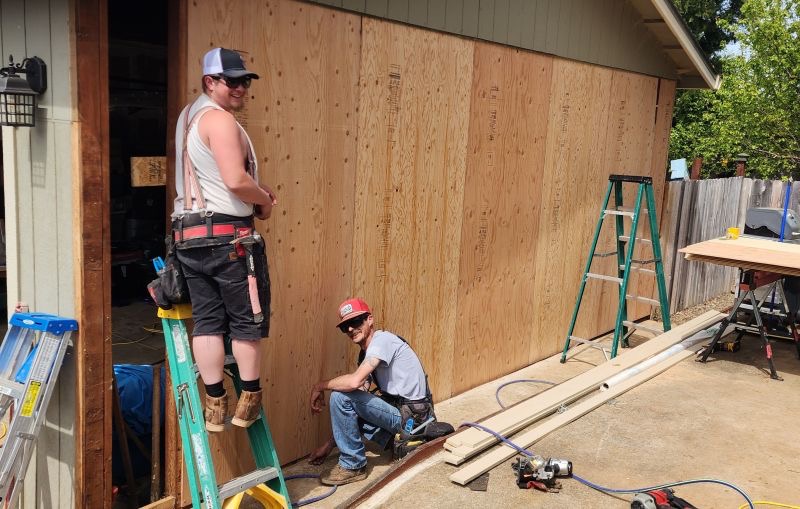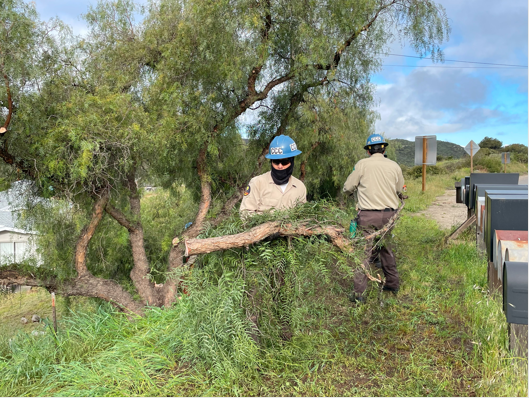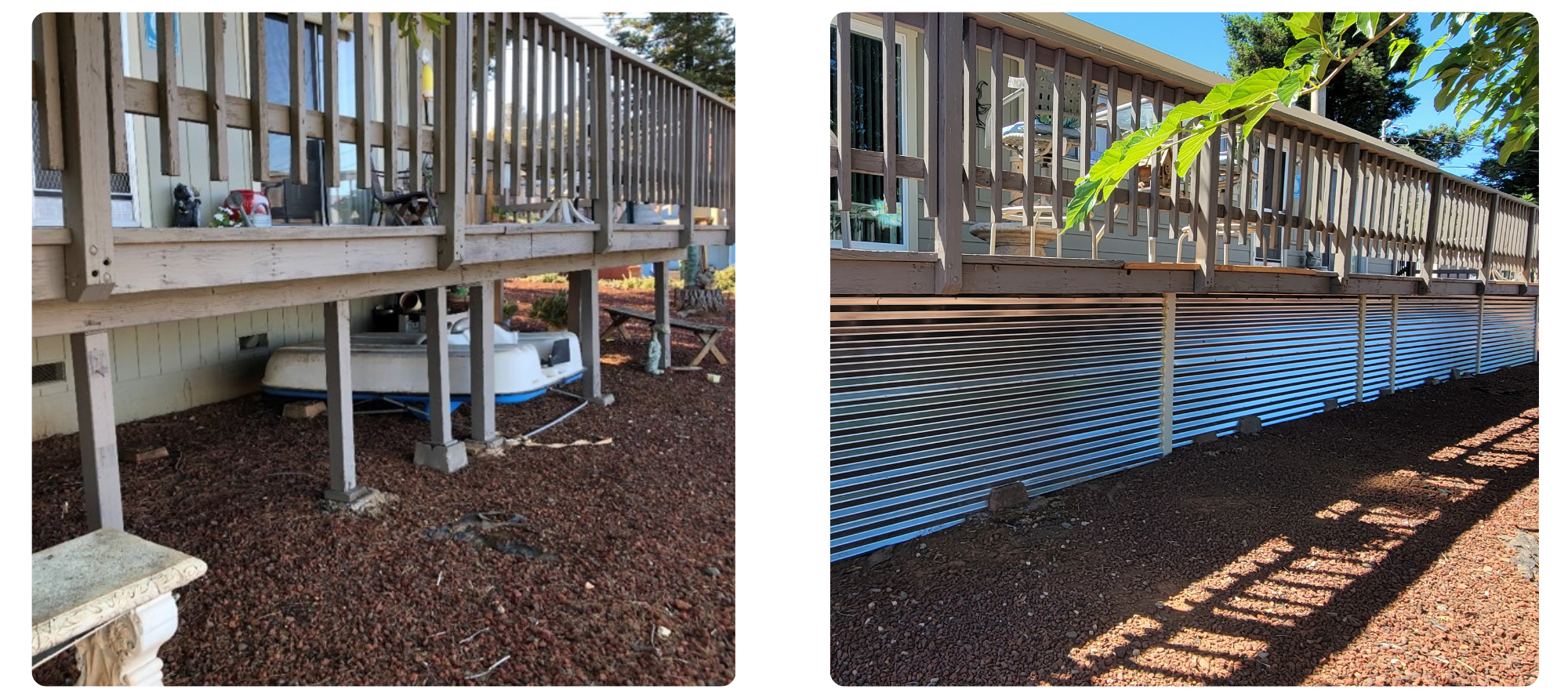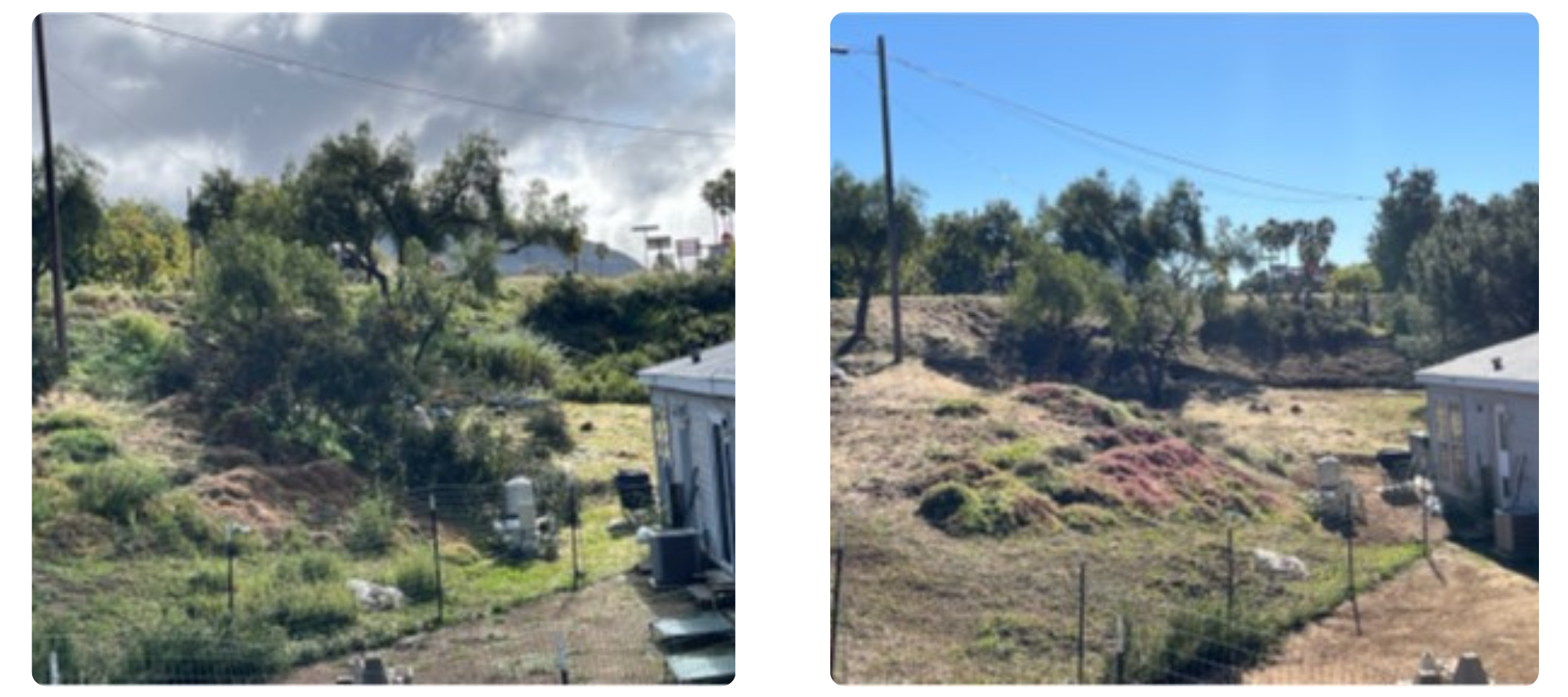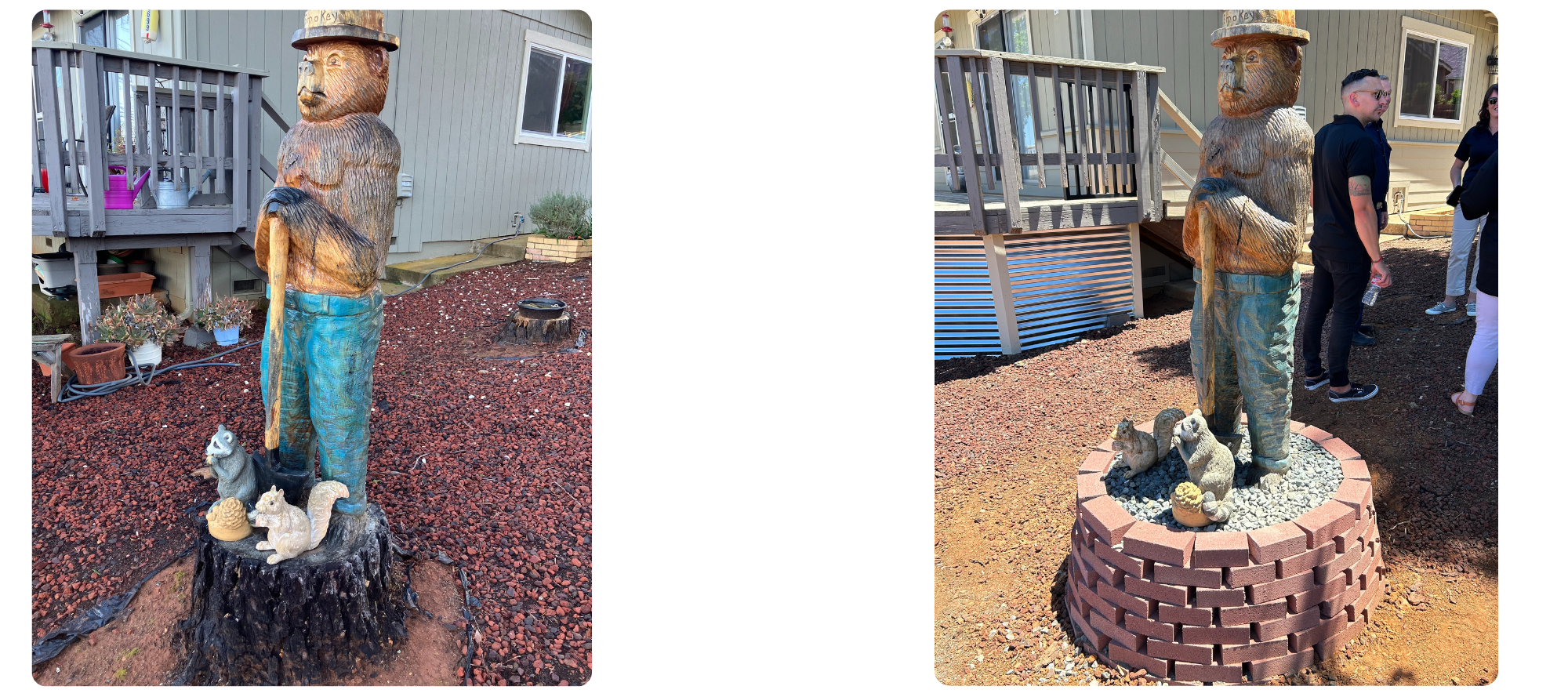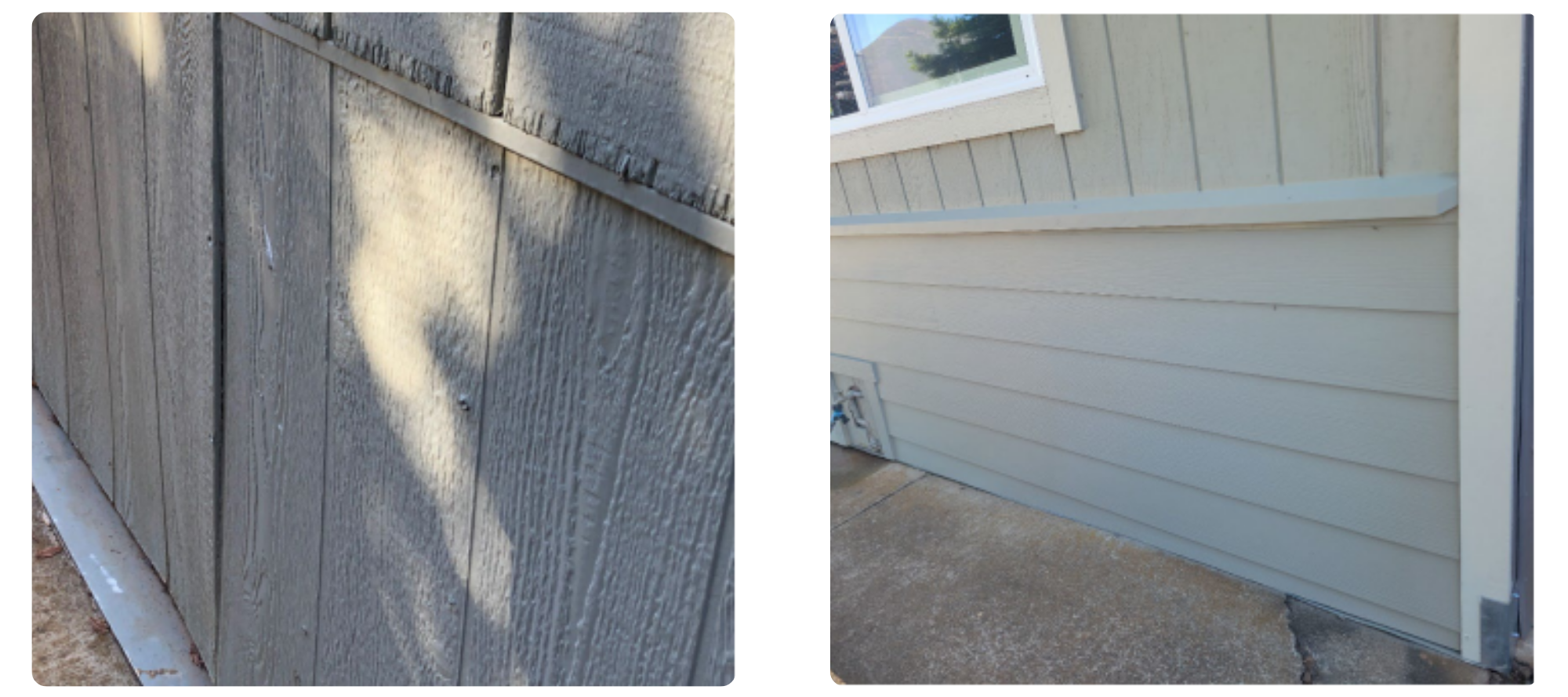California Wildfire Mitigation Program
Main Page About Homeowners Board Meetings Resource Center Contacts
Contractors
I am a Contractor, how do I participate in the Program?
Each participating community has their own specifications and requirements, please select the community you are interested in below to be re-directed to their procurement site.
Before & After Showcase
Click Here for Frequently Asked Questions
Q: Does all duff and pine needles need to be removed?
A: Yes. Combustible ground fuels in Zone 0 and Zone 1 that are dead or dying must be removed per 12 CCR 1299.0 3(a)
Q: What does the program do with the material generated from treatments?
A: All materials must be taken off site and disposed of at approved facilities. Wood can be retained as firewood, but it must be stored in Zone 2 or further.
Q: Is the burning of waste material generated from this program allowed as a removal method?
A: No. Because of the need for permitting and other regulation compliance, our program does not allow for any burning at this time.
Q: Are contractors required to grind logs and stumps?
A: Yes. All stumps within 100 feet of the home must be mitigated. In general, this will require grinding the stump to ground level.
Q: Are exterior coatings that are fire rated allowed for use as retrofit measures for the CWMP?
A: No. The use of paints, coatings, stains, or other surface treatments are not an approved method of protection per California Building Code Chapter 7A.
Q: What building vents are retrofitted in the California Wildfire Mitigation Program?
A: Any opening intended to permit ventilation, either in a horizontal or vertical plane is considered a vent and has a listed retrofit under Chapter 7A. Dryer vents, and makeup air intake vents also have retrofits listed.
Q: Where do I find information on how to perform a vent retrofit?
A: The CWMP has developed a comprehensive list of retrofits including standards on how to perform the retrofits called the California Wildfire Mitigation Program Minimum Quality Standards (CWMP MQS).
Q: How do I determine the natural ventilation requirements for the installation of vent retrofit?
A: Please refer to the CWMP MQS for additional information on natural ventilation requirements. The program has a requirement that buildings be provided with the required natural or mechanical ventilation after the installation of vent retrofits.
Q: What products and materials do I have to use for the recommended program retrofits?
A: The CWMP MQS outlines program requirements, codes, and standards that apply to each retrofit. The State Fire Marshal’s Building Materials Listing Program (BML) provides a voluntary listing service for products that comply with the California Building Code and California Residential Code.
Q: Where can I find the CWMP MQS?
A: Please contact the participating community managing the project in your area.
Q: Are Licensed Timber Operators (LTOs) eligible to participate in the CWMP?
A: Yes, LTOs may participate in the CWMP, but only within the scope of their license. It’s important to note that LTOs are licensed by the California Board of Forestry and Fire Protection, not the California Contractors State Licensing Board (CSLB). To qualify for CWMP participation, LTOs must hold a valid Commercial License (Type A).
For more information, visit: Licensed Timber Operators | CAL FIRE
Q: Is a CSLB C-47 license required to work on a manufactured / mobile home?
A: A C-47 General Manufactured Housing license is required for contractors who install or prepare to move manufactured / mobile homes. Once the home is installed, contractors with other CSLB license classifications may perform work, if it falls within their trade. If any work is needed on the home’s structural integrity, permitting with the California Department of Housing and Community Development (HCD) may be required.
For more information please see: CSLB Bulletin (June 7,2024)

